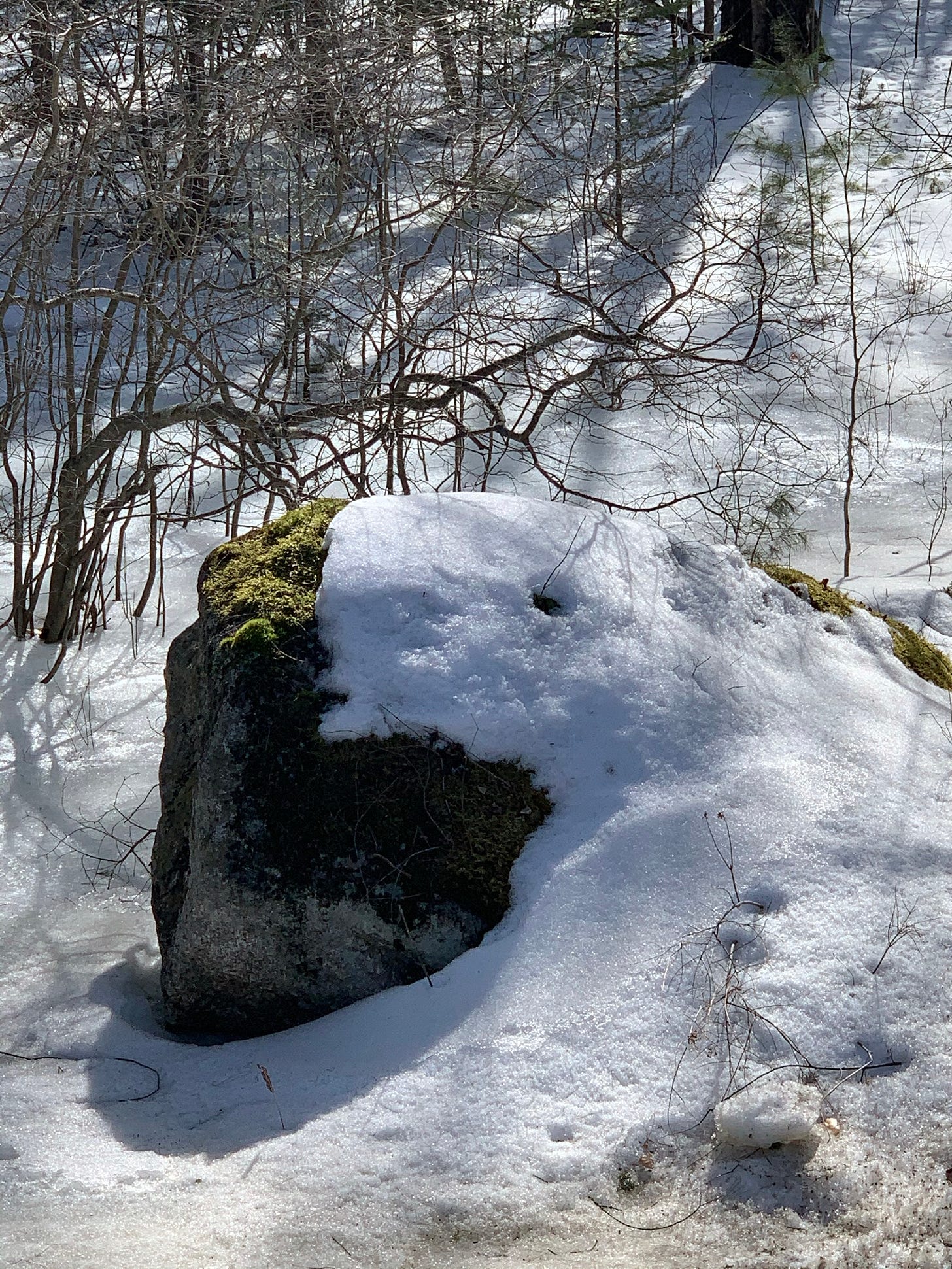For the last 12 years, ever since I moved to Maine from Hong Kong, January has been retreat month. It’s a time where Kadampa Buddhists all over the world traditionally engage in meditation retreat.
It’s a time where we focus and dedicate more time to our meditation practice. And the real joy of retreat, for me, is how we create mental space for ourselves.
We do this by deciding to stop engaging in certain activities. We step back for a little while from our normal, habitual way of life. You know, the one where you’re on autopilot? And enact change for a little while.
This act of stepping back allows so much goodness into our life.
The act of pausing creates a nurturing environment within for healing and transformation. It aids us tremendously in our regular meditation practice. Taking away distractions, allowing us to go deeper, allowing the mind to really, deeply settle.
A time to stop and reboot
I had a taste of this over the holidays. Two days before Christmas, the power went out due to that huge storm that swept across the United States. We were extremely lucky; we were safe, had a generator and a wood stove to keep us warm.
And for a day and a half, we lived mainly without power.
This meant a few things: I didn’t go on social media. I didn’t mindlessly scroll on my phone. I didn’t watch TV. Instead, I slept a lot. I read books. I sat around, looked out of windows, and deeply mulled over things. I’d boil water on the wood stove, then sit and drink tea by the flames of the fire.
During these hours of seemingly doing nothing, and honestly feeling quite grumpy for most of the time, like I was detoxing from all the busyness (wondering if the power would come back on for our holiday meal), some real magic was nonetheless taking place deep within.
It’s like I was finally processing things without all the noise of distractions.
When the lights came back on on Christmas Eve at 4pm, and in the subsequent week, I felt remarkably invigorated. Like that 36-hour pause from normal activity released a new sort of energy within.
This is similar to what happens on a meditation retreat.
Setting boundaries
In 2021, I was lucky to take part in the Mahamudra Retreats taking place at Kadampa Meditation Center New York. These annual retreats were taking place both online and in person due to Covid, and there were hundreds of us joining from all over the world via Zoom.
This meant I was able to learn from Gen Samten, an absolute master of meditation retreats, about how to do a retreat while at home. And amid my busy job.
The main thing he talked about in the introductory teaching, were the boundaries and the flexibility we would need, to do this well at home.
“We create a retreat environment through setting boundaries,” he explained.
He encouraged our retreat to have a very clear start and end point. And then to set our boundaries to just be one week long at a time. That way, if our retreat takes place for the whole month, for example, we can tweak our boundaries as we go at the end of each week.
The boundaries essentially act as guidelines during this time. They’re a way to disrupt our normal activity, to bring more meditative energy into daily life just for this short period of time.
“Boundaries are like objects you pick up and put down.”
He explained how in ancient Tibet, people would literally place stones down in their environment. They would lay down these markers for the duration of their retreat, saying: “I won’t go beyond this point”.
For us modern beings, the boundaries are mental, physical, verbal, and digital:
Digital: How will we engage with our devices, email, social media, watching TV this coming week? Could we reduce some of this noise coming in? For example, maybe we will only check our personal email once a day; check our work email three times during the work day. Check social media a couple of times a week, instead of hourly! Have mornings and evenings be device-free. Keep silence in the morning before we meditate.
Mental: What will we focus our mind on? Clearly we will already have our meditation sessions, where we’ll be focusing on a particular object of meditation. But are there also any habitual negative habits of mind we could take a break from — for example choosing to not focus on worrying about a certain thing that we tend to worry a lot about, just for that coming week?
Physical: Where will we go? Are there any non-essential trips we could avoid? Could we also add in one healthy walk per day, out in the fresh air and plan to be fully present during that time?
In all aspects, we were encouraged to simplify things. We were encouraged to choose one or one or two boundaries in each category and write them down.
Gen Samten also shared two main boundaries, which Geshe Kelsang Gyatso, the founder of our tradition, had shared during his many teachings about retreat, which particularly apply to Buddhists like me:
To keep a happy mind as much as possible, stop thinking about your problems
To keep a happy mind, through thinking about Dharma, or Buddha’s teachings
He encouraged us to try to stay as present-centered as possible. “The past no longer exists. And we tend to overthink the future… The future is a dream that may, or may not, happen.”
Finally, he reminded those of us joining via Zoom, who were merging our retreat with our work life and home life, that flexibility was key.
“Keep a gentle mind towards yourself” he told us. Don’t worry when you invariably mess up!” And let everything around you teach you, so you’re in a Lamrim pure land. Let everything around you, the snow in your yard, the people driving by on your road, the deer walking by the frozen stream, let it all teach you Dharma.
The peace of the pause
I’ve grown to love this annual setting of boundaries in January. The joy of simplifying life down for a week at a time, and allowing the month to take on a way more focused and meditative quality.
And what surprises me every year I do it, is how freaking cleansing and relaxing it is to engage in retreat. It’s like taking a mental vacation for a month. Even when we do this amid our busy work and home life.
Rather than the boundaries feeling like a lack or a deprivation, instead they allow us to deeply relax. They give us the permission and the structure to not fall into a rut of our routine activity, which may be zapping our energy with all its distractions. But instead to move into a more spacious way of being. To step out of the ordinary.
There is real brilliance too in how these boundaries are designed. It’s not like a New Year’s Resolution, where we’re making a promise to change a habit for the rest of our life, or the entire year, which feels way too ambitious and is too easy to fail at. Rather, we’re inviting quiet into our life for a short, highly defined set of time.
And within that pause — that is so evident in the still winter landscapes of New England — deep healing can occur. The inner stillness facilitates new growth once we come out the other side. Restored. Inspired. And able to access new levels of inner peace.






